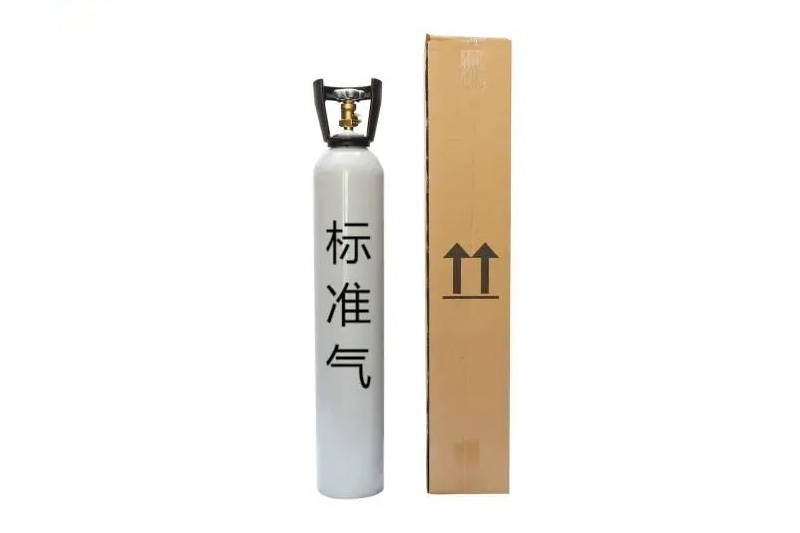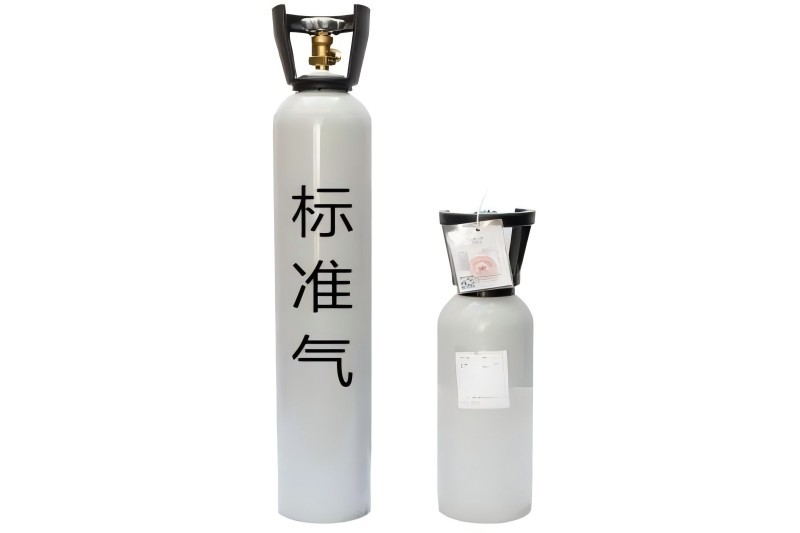Standard Mixed Gas
Key words:
Petrochemical standard gas refers to precisely formulated and certified reference gases used in petrochemical production, testing, and instrument calibration to ensure process safety and data accuracy. These gases contain critical components such as methane, propane, hydrogen sulfide, and carbon monoxide, simulating real-world gas environments under operational conditions. They are applied in refining catalytic cracking, pipeline leak detection, tail gas emission monitoring, and other critical processes. The gas purity must reach the parts per million (ppm) level and comply with international certifications such as ISO 6142 to guarantee concentration traceability. Additionally, these gases must exhibit long-term stability to prevent compositional changes during transportation and storage, while also adapting to calibration requirements under extreme conditions like high temperatures and high pressures. With the intelligent transformation of the petrochemical industry, standard gases are evolving toward multi-component dynamic simulation, rapid-response online analysis, and low-carbon monitoring technologies, providing core support for safe production and environmental compliance.
Key words:
Leak Detection Calibration Gas
Leak Detection Calibration Gas is a reference material used to calibrate gas detection alarms and leak detection instruments. It ensures the sensitivity and reliability of equipment through precisely controlled compositions and stable concentrations. Typically composed of high-purity background gases (e.g., nitrogen or air) mixed with target gases (e.g., methane, carbon monoxide, hydrogen sulfide) at specific concentrations, these gas mixtures cover a range from alarm thresholds to full-scale ranges to meet diverse operational needs. Compliant with national standards such as GB/T 5274, the gas guarantees homogeneity and long-term stability. It is widely applied in petrochemical plants, gas pipelines, and fire safety inspections, where periodic calibration helps prevent accidents caused by gas leaks, ensuring personnel and equipment safety. Custom formulations with varying gas combinations and concentration gradients are available to address specialized requirements.
Key words:
Environmental Monitoring Standard Gas
Environmental Monitoring Standard Gas is a precisely formulated reference gas used to calibrate air quality analyzers, pollution source monitoring systems, and other environmental detection equipment, ensuring data accuracy and comparability. Key components include sulfur dioxide (SO₂), nitrogen oxides (NOx), volatile organic compounds (VOCs), and particulate matter simulators, with concentration ranges spanning regulatory thresholds to trace-level pollutants. These gases meet ppm to ppb ultra-high purity standards and are certified under ISO 17025 to guarantee metrological traceability.Widely applied in air pollution warning systems, industrial emission verification, and laboratory quality control, they play a critical role in emerging fields like carbon monitoring and ozone precursor analysis. As environmental regulations tighten, these gas standards are evolving toward multi-component blends, low-concentration stability, and intelligent dynamic calibration technologies, enabling precise pollution control and supporting global carbon neutrality goals.
Key words:
Medical calibration gas refers to reference gases used for calibrating and quality-controlling medical devices and testing instruments. Its composition and concentration strictly adhere to international standards (such as ISO 13485, GMP, etc.), ensuring precision and safety in medical diagnosis and treatment. These gases typically consist of high-purity oxygen, carbon dioxide, nitrogen, nitrous oxide, or specific gas mixtures (e.g., O₂/CO₂/N₂ blends for blood gas analysis), with some containing trace calibration components. They are applied to verify the performance of critical medical equipment, including ventilators, anesthesia machines, blood gas analyzers, and pulmonary function testers. The products must exhibit high stability and contaminant-free properties, with gas cylinders and valves specially treated to prevent adsorption or chemical reactions. Widely used in hospitals, testing laboratories, medical device manufacturing, and research institutions, medical calibration gases ensure accurate equipment data through regular calibration, supporting clinical diagnosis and therapeutic decision-making. Customized concentrations and mixing ratios are available to meet diverse medical scenarios, enhancing compliance with healthcare standards and operational reliability.
Key words:
Latest Products
Latest News



